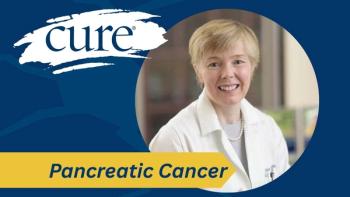
Patients With Resectable NSCLC See Benefits from Pre- and Post-Surgical Opdivo
Treatment with neoadjuvant Opdivo, followed by Opdivo after surgery led to significantly improved event-free survival in the first phase 3 perioperative study in patients with resectable non-small cell lung cancer.
Neoadjuvant (pre-surgical) treatment with Opdivo (nivolumab) plus chemotherapy followed by surgery and adjuvant (treatment administered following the main treatment) Opdivo significantly improved event-free survival (EFS, the time a patient lives without complications from the disease), compared with placebo plus chemotherapy, in patients with previously untreated resectable (able to be removed via surgery) stage 2 to 3B non-small cell lung cancer (NSCLC), according to data from the phase 3 CheckMate-77T trial presented at
“CheckMate-77T is the first phase 3 perioperative study to build on the standard-of-care neoadjuvant (Opdivo) plus chemo and supports perioperative (Opdivo) as a potential new treatment option for patients with resectable non-small cell lung cancer,” Dr. Tina Cascone, assistant professor in the department of thoracic, head and neck medical oncology at The University of Texas MD Anderson Cancer Center, said during a presentation of the data.
After a median follow-up of 25.4 months, perioperative Opdivo demonstrated a statistically significant and clinically meaningful improvement in EFS. Median EFS with Opdivo was not reached, compared with 18.4 months with placebo. Per investigator assessment, treatment with Opdivo reduced the risk for recurrence, disease progression or death by 44%, compared with placebo.
Further, 18-month EFS was superior with Opdivo vs placebo (70% vs 50%, respectively), “suggesting greater benefit for our patients over time,” Cascone said.
PFS benefit with Opdivo was observed across subgroups, regardless of disease stage — with a particular benefit in those with stage 3 disease – N2 status (single-station vs multi-station), type of disease (squamous vs non-squamous), smoking status and PD-L1 status.
“However, given the small sample size of this subgroup, results should be taken with caution,” Cascone noted.
In exploratory analyses, the investigators evaluated EFS by baseline disease stage, tumor PD-L1 expression, pathologic complete response (pCR, when cancer cannot to be found on biopsy samples taken during surgery or after treatment) and major pathologic response (MPR, 10% of the tumor remains after post-surgical treatment) status, adjuvant treatment status and pCR status in patients who received adjuvant treatment.
Among patients with stage 2 disease, median EFS was not reached in both the Opdivo and placebo arms, while those with stage 3 disease demonstrated a median EFS of 30.2 monthsand 13.4 months, respectively. The 12-month EFS rates in patients with stage 2 disease treated with Opdivo and placebo were 78% and 73%, respectively, and 71% and 52% in those with stage 3 disease.
When evaluating patients by PD-L1 status, those with less than 1% induced a median EFS of 29 months with Opdivo, compared with 19.8 months with placebo, while those with 1% or greater had a median EFS not yet reached and 15.8 months, respectively.
Opdivo, compared with placebo, was superior for both pCR and MPR. The pCR benefit was also seen across the subgroup analysis.
“We know that patients have a better prognosis if pre-surgical treatment of lung cancer leads to tumor disappearance on pathology reports after surgery than if there are still obvious cancer cells present in post-surgical material,” Elene Mariamidze of Todua Clinic, Tbilisi, Georgia, said in a press release issued by ESMO. “The new results show that adding immunotherapy to chemotherapy before surgery, and then continuing with maintenance immunotherapy for a year after surgery, is more effective than just giving chemotherapy before surgery.”
Any-grade surgery-related side effects occurred in 73 patients (41%) in the Opdivo arm and 69 patients (39%) patients in the placebo arm, while 21 (12%) patients in each arm experienced grade 3 to 4 side effects. Treatment-related deaths occurred in 2 (1%) patients in the Opdivo arm: one due to grade 5 pneumonitis (lung inflammation) and one due to grade 4 pneumonitis, both occurring after completion of neoadjuvant treatment.
Of the 229 patients who received Opdivo plus chemotherapy, 15% discontinued neoadjuvant therapy, while 20% went on to cancel their definitive surgery and 17% of this arm did not receive adjuvant therapy as a result of study drug toxicity (6%), disease progression (2%) or another reason (9%).
In total, 85 patients (60%) in the Opdivo arm completed treatment, compared with 92 patients (60%) in the control arm, and eight (6%) are ongoing in the study, compared with eight (5%) with placebo. Nearly two-thirds of patients received adjuvant treatment with a median number of 13 doses administered in each arm, Cascone said.
Opdivo is the current standard of care for the adjuvant treatment of patients with resectable NSCLC. Therefore, Cascone and colleagues believed the agent has a role in the neoadjuvant setting as well.
“A perioperative treatment approach, including adjuvant (Opdivo), could potentially further reduce the risk of disease relapse and improve clinical benefit in patients with resectable non-small cell lung cancer,” Cascone said.
Investigators randomized 461 patients to receive either:
- 360 mg Opdivo every three weeks plus chemotherapy every three weeks for four cycles, followed by surgery within six weeks of neoadjuvant therapy and 480 mg Opdivo every four weeks for one year; or
- Placebo plus chemotherapy every three weeks for four cycles, followed by surgery within six weeks of neoadjuvant therapy and placebo for one year.
To be eligible for the trial, patients had to have resectable, stage 2A to 3B NSCLC, have received no prior systemic anti-cancer treatment and no EGFR mutation or known ALK alterations.
Patients were stratified by disease histology, disease stage and PD-L1 status.
Cascone noted that, in the Opdivo arm, median age was 66 years, while the majority of patients had stage 3A-B disease (64%), were current or former smokers (93%) and had either PD-L1 less than 1% (41%) or PD-L1 1% or greater (56%).
Lobectomy was the most common type of surgery and was performed in 80% of patients in the Opdivo arm and 72% of those in the chemotherapy arm, while 9% and 14% of patients, respectively, underwent pneumonectomy. Approximately 90% of patients in each arm had an R0 resection.
For more news on cancer updates, research and education, don’t forget to





